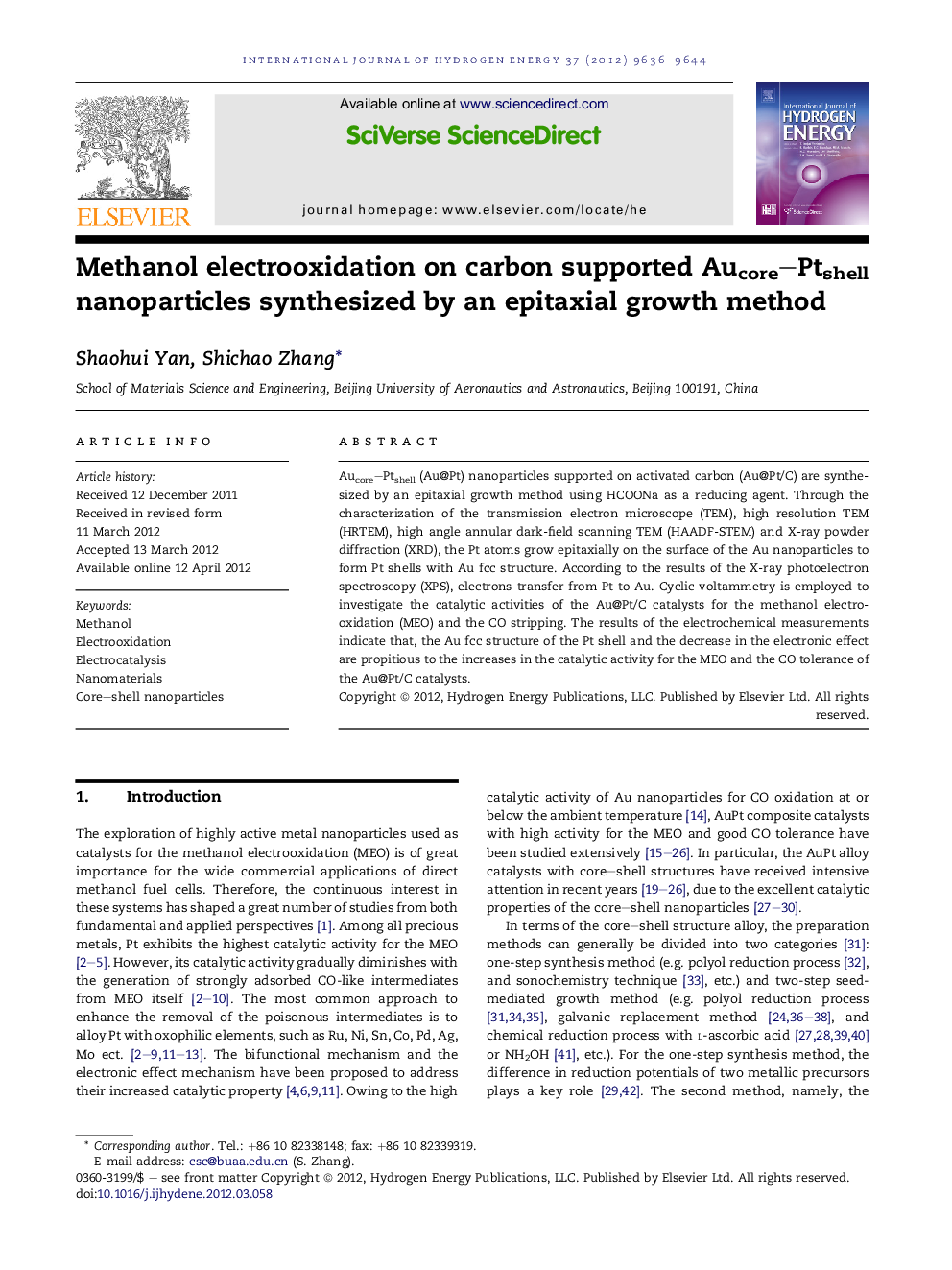| Article ID | Journal | Published Year | Pages | File Type |
|---|---|---|---|---|
| 1271277 | International Journal of Hydrogen Energy | 2012 | 9 Pages |
Aucore–Ptshell (Au@Pt) nanoparticles supported on activated carbon (Au@Pt/C) are synthesized by an epitaxial growth method using HCOONa as a reducing agent. Through the characterization of the transmission electron microscope (TEM), high resolution TEM (HRTEM), high angle annular dark-field scanning TEM (HAADF-STEM) and X-ray powder diffraction (XRD), the Pt atoms grow epitaxially on the surface of the Au nanoparticles to form Pt shells with Au fcc structure. According to the results of the X-ray photoelectron spectroscopy (XPS), electrons transfer from Pt to Au. Cyclic voltammetry is employed to investigate the catalytic activities of the Au@Pt/C catalysts for the methanol electrooxidation (MEO) and the CO stripping. The results of the electrochemical measurements indicate that, the Au fcc structure of the Pt shell and the decrease in the electronic effect are propitious to the increases in the catalytic activity for the MEO and the CO tolerance of the Au@Pt/C catalysts.
► A series of Au@Pt/C catalysts are synthesized by an epitaxial growth method. ► The Pt binding energy increases due to the transfer of electrons from Pt to Au. ► The Pt shell with Au fcc structure reveals high electrocatalytic activity. ► The Pt shell with Au fcc structure has outstanding anti-CO adsorption ability. ► The Au@Pt/C catalysts exhibit high catalytic activity and excellent CO tolerance.
